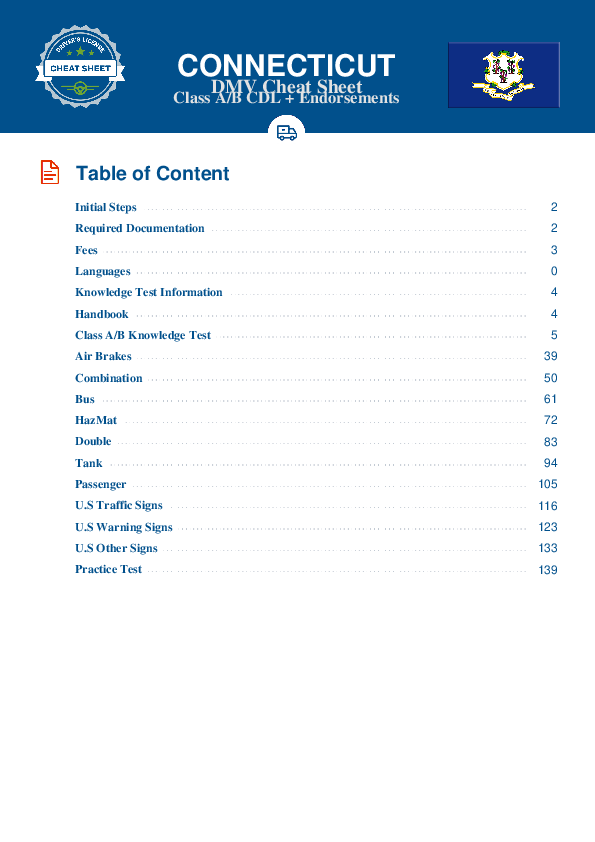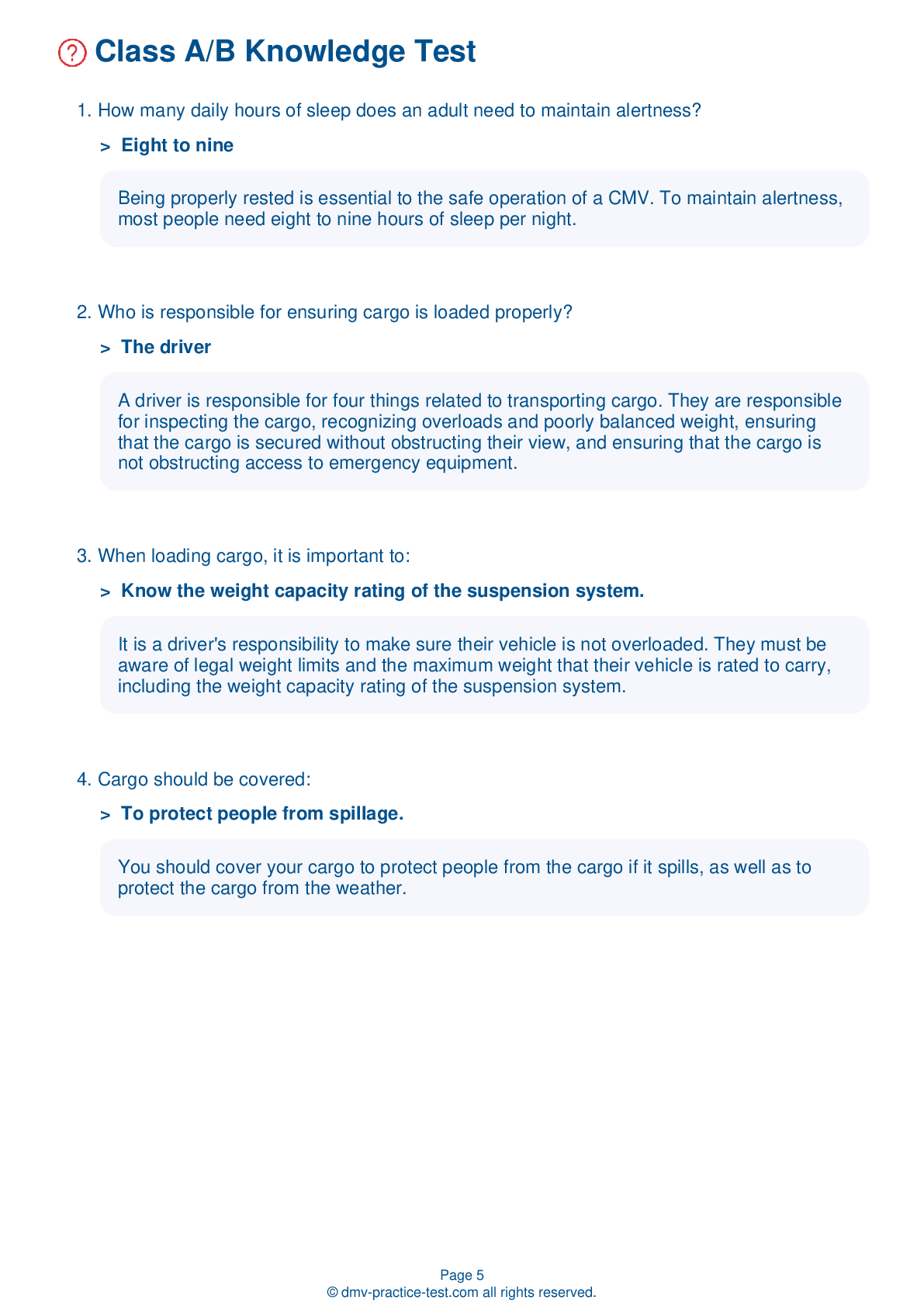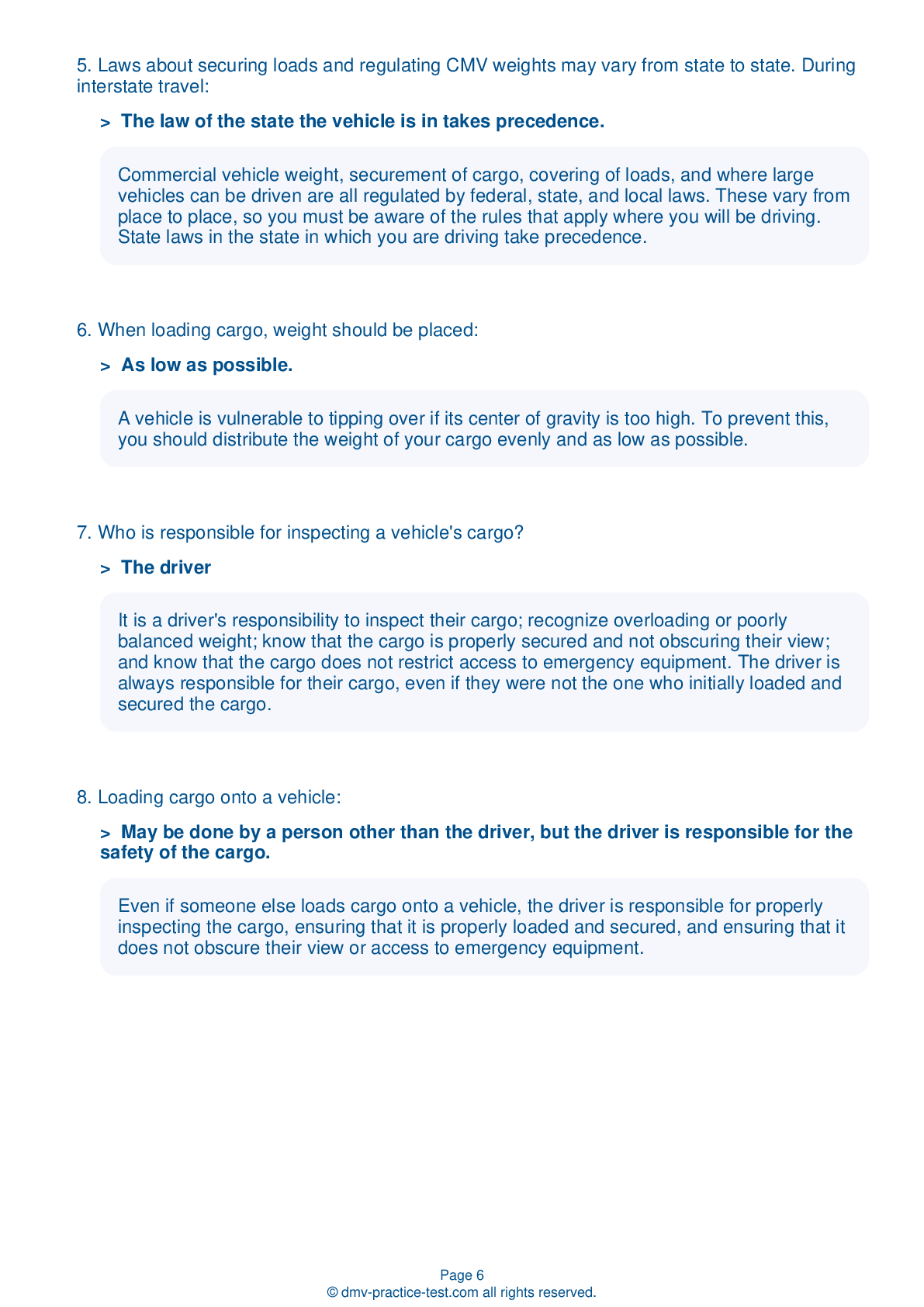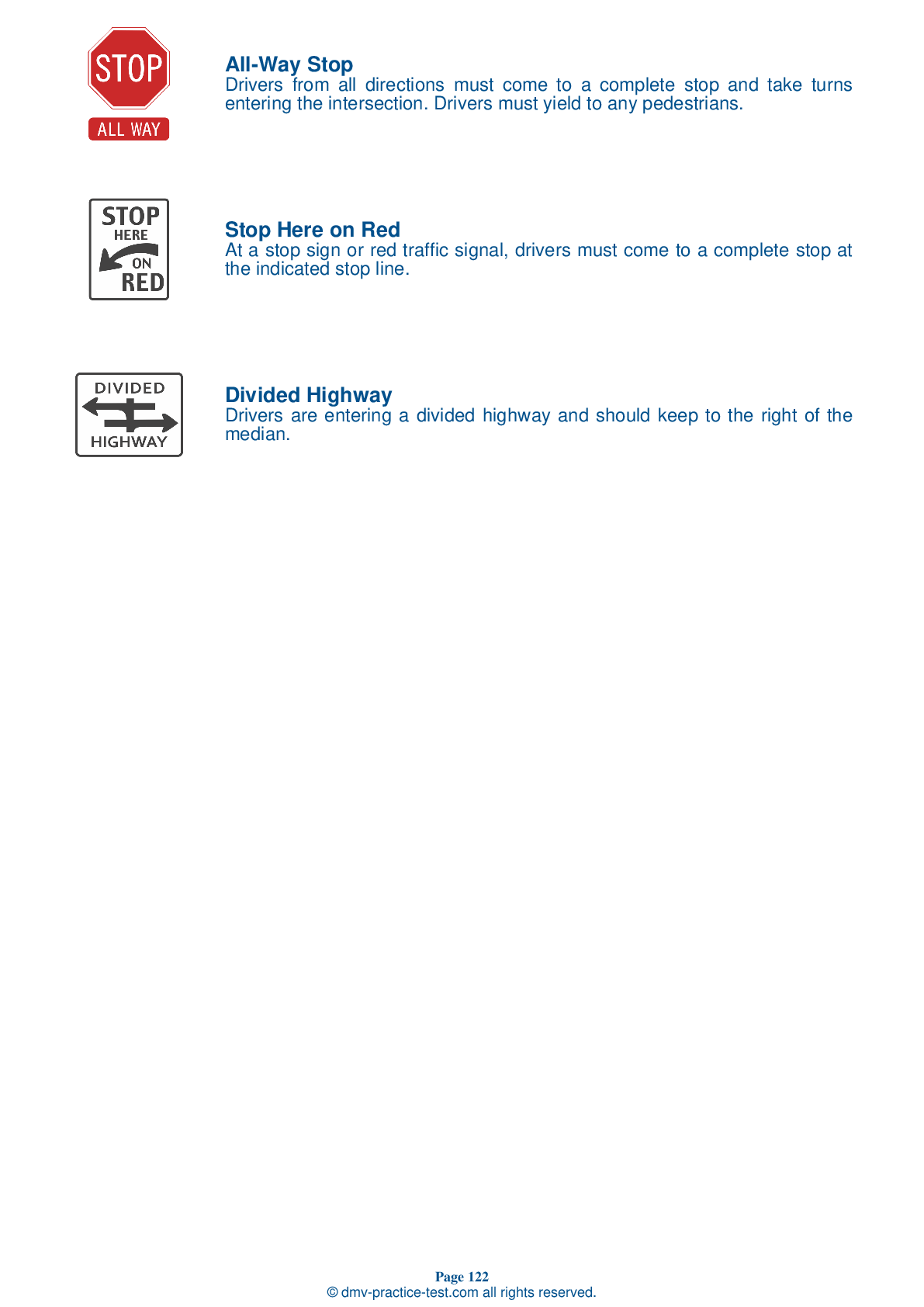Knowledge Test Class B #2
Class B Driving Test | Connecticut 2025 #2 Page 4 of 7
Train for FREE online with our Connecticut class B license test. The official exam test consists of several obligatory parts, with all of them checking your knowledge of different blocks of road rules. If you need to obtain a CT CDL class B permit in 2025, practice as much as possible. Free sample tests published on our website will help you check and improve your knowledge and boost your grades. Please bear in mind that CDL class B requirements may vary from state to state.
50
40
20
22 . Unsafely reaching for a phone is:
If you must use a mobile phone while driving, it must be in close proximity to you and easily reachable while you are securely fastened into your seat. It is dangerous and non-compliant to unsafely reach for a mobile phone, even if you plan to use a hands-free feature when speaking on the phone.
23 . Which of the following is not an example of a driving hazard?
An ice cream truck
Passing an accident scene can be hazardous because the people involved in the accident may not be watching traffic, and the scene itself may distract other passing drivers. Ice cream trucks can create hazardous conditions because they attract children who may not pay attention to nearby vehicles. Shoppers near the roadway are often paying attention to stores, not passing traffic.
24 . When checking tires, finding which of the following is not a cause for concern?
Tread of at least 2/32 an inch on rear tires
When checking your vehicle's tires, you should confirm that air pressure is neither too low nor too high; that there is at least 4/32 of an inch of tread depth in every major groove on the front tires; that there is at least 2/32 of an inch of tread depth in grooves on other tires; and that radial and bias-ply tires are not used together.
25 . Which of the following is the best advice for driving in fog?
Driving in fog is always dangerous and should be avoided entirely if at all possible. If you must drive in fog, be sure to turn on your low beam headlights and fog lights, even during the daytime.
26 . Which of the following is not a type of retarder?
Electric
Retarders are mechanisms in some vehicles that help slow a vehicle and reduce the need for braking. The four basic types of retarders are exhaust, engine, hydraulic, and electric.
27 . Some air brake systems use alcohol:
To reduce the risk of rust forming on air brake valves.
Some air brake systems contain an alcohol evaporator. This device introduces alcohol into the braking system to inhibit the formation of ice.
28 . When backing with a trailer:
When backing, you should pull forward to reposition your vehicle whenever needed. Drift should be corrected immediately by turning the steering wheel in the direction of the drift.
2025 Connecticut | Frequently Asked Questions
A CDL Class A license in Connecticut allows the holder to operate any combination of vehicles with a Gross Combination Weight Rating (GCWR) of 26,001 pounds or more, provided the Gross Vehicle Weight Rating (GVWR) of the vehicle being towed is over 10,000 pounds. This typically includes tractor-trailers and truck and trailer combinations.
A Class A CDL license in Connecticut allows the holder to operate vehicles such as tractor-trailers, truck and trailer combinations, tank vehicles, livestock carriers, and flatbeds. The license is for any combination of vehicles with a Gross Combination Weight Rating (GCWR) over 26,001 pounds, if the towed vehicle exceeds 10,000 pounds GVWR.
To obtain a Class A CDL license in Connecticut, you must be at least 21 years old, possess a valid Connecticut driver's license, pass a vision test, and complete a commercial driver's license knowledge test. You must also pass a pre-trip vehicle inspection test and a skills test, which includes off-road maneuvers and on-road driving. Additionally, you must provide a medical examiner's certificate.
In Connecticut, you must be at least 21 years old to qualify for a Class A CDL license if you intend to drive across state lines (interstate). However, if you plan to drive only within Connecticut (intrastate), you can obtain a Class A CDL license at the age of 18.
Specific endorsements are not required for a Class A CDL license, but they can grant additional privileges. Endorsements include T for Double/Triple Trailers, P for Passenger Vehicles, N for Tank Vehicles, H for Hazardous Materials, and S for School Buses. Each endorsement requires passing a separate knowledge test and sometimes a skills test.
The Class A CDL skills test in Connecticut encompasses three main sections: a pre-trip vehicle inspection, a basic vehicle control test, and an on-road driving test. This assessment is designed to evaluate your ability to safely operate a Class A commercial vehicle, including checking for safety defects, maneuvering the vehicle in various situations, and driving in normal traffic conditions.
Yes, Class A CDL license holders may face limitations based on factors like the driver's medical condition, the type of vehicle driven, and the presence of certain endorsements. For example, drivers might be restricted to operating automatic transmission vehicles, or prohibited from driving tank or passenger vehicles without the appropriate endorsements. Also, all CDL holders must abide by federal hours-of-service regulations.
Yes, in Connecticut, the written Class A CDL test is available in multiple languages besides English. However, federal regulations require that all CDL holders understand English sufficiently to converse with the general public, understand highway traffic signs and signals, and respond to official inquiries and instructions.
Yes, you can request accommodations for the Class A CDL written test if you have a disability. The Connecticut DMV complies with the Americans with Disabilities Act (ADA) and provides reasonable accommodations like sign language interpreters, extra time, or tests in alternative formats. You should contact the DMV directly to arrange these accommodations prior to your test date.
If you fail the Class A CDL written test in Connecticut, you are allowed to retake it. However, you must wait a minimum of seven days before your next attempt. There is also a retest fee that applies each time you retake the test. It's recommended to study the CDL manual thoroughly before your next attempt.



